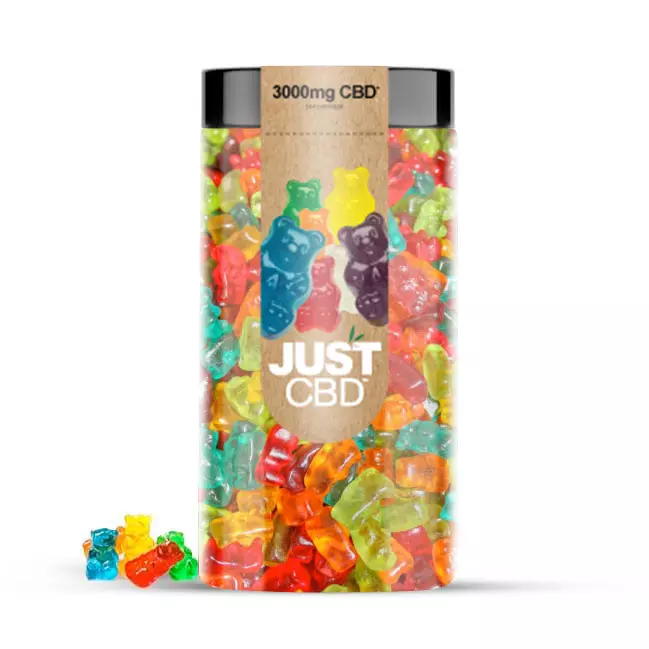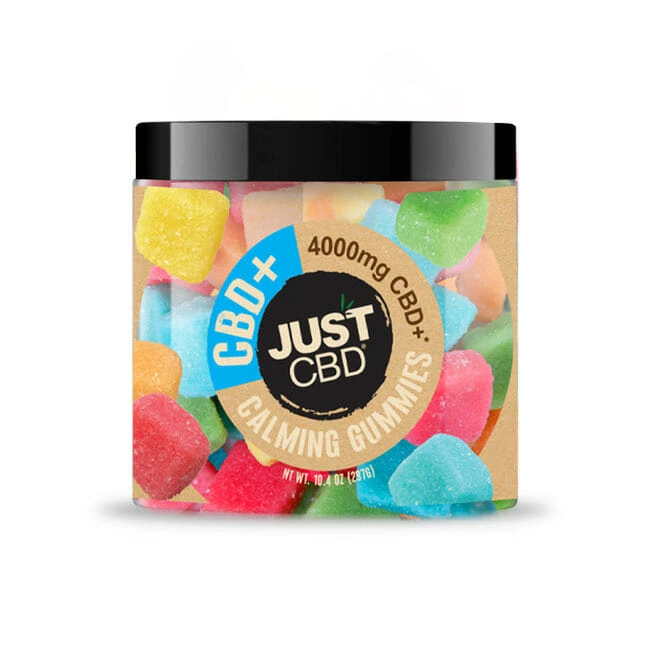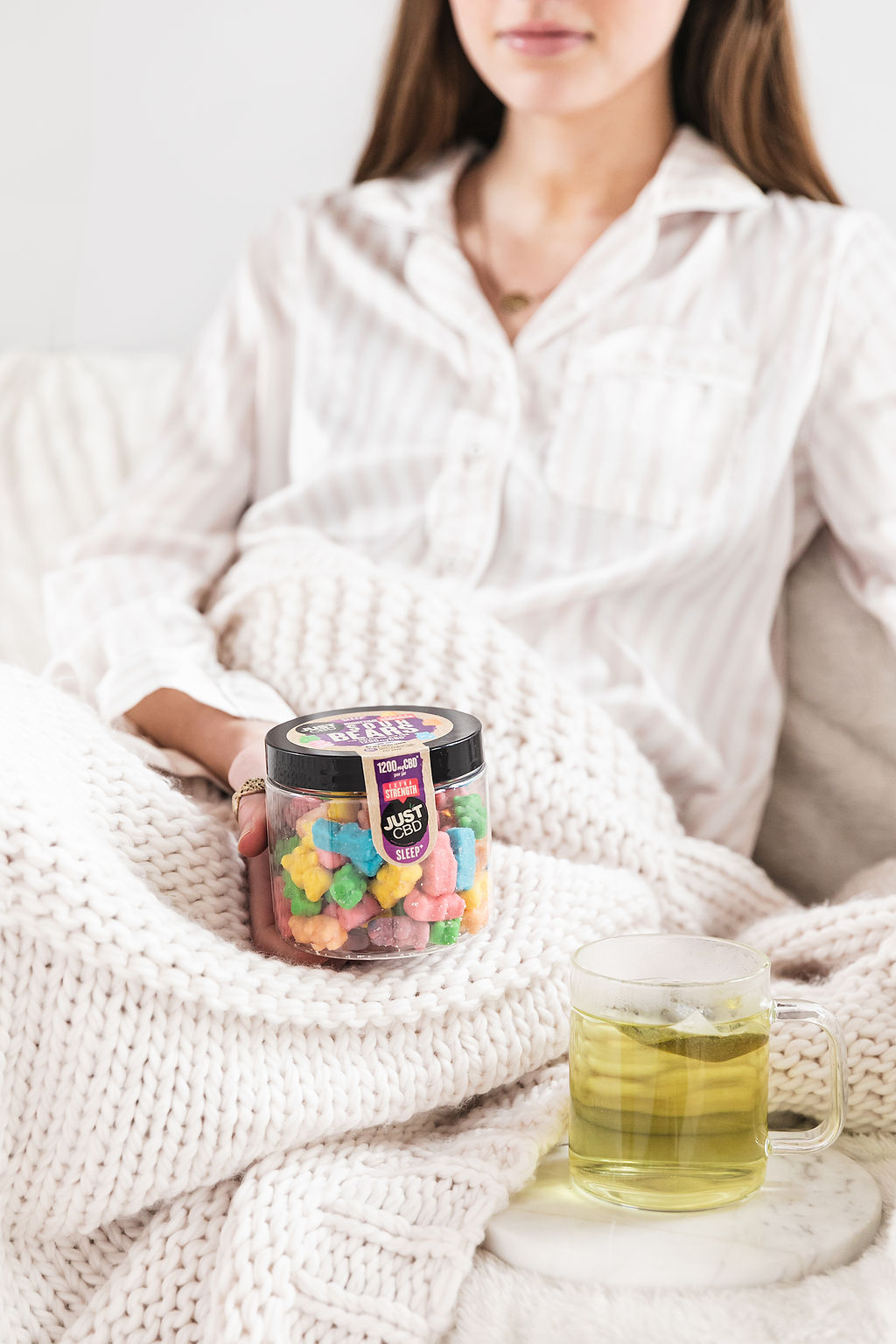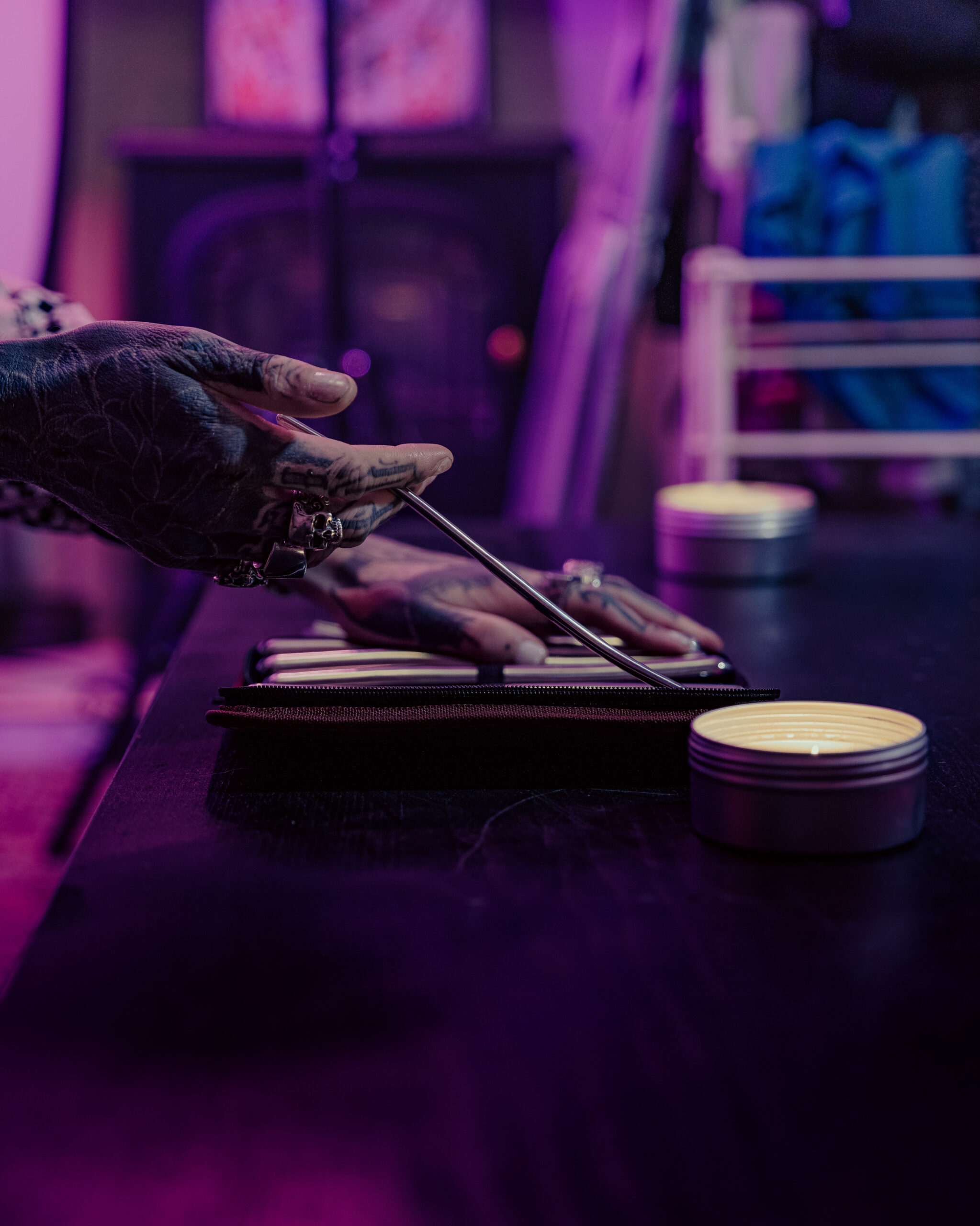Choosing the Right CBD Gummies for Anxiety
Finding relief from anxiety in today’s fast-paced world can be a challenge, and many are turning to CBD gummies as a natural solution. With so many options available, choosing the right gummies for managing anxiety can feel overwhelming. This guide will delve into the key factors to consider when selecting CBD gummies for anxiety, helping you make an informed decision and embark on a journey towards greater peace of mind.
Understanding Different Types of CBD
Navigating the world of CBD gummies for anxiety can feel overwhelming with so many options available. Understanding the different types of CBD and their effects is crucial to making an informed choice.

CBD, or cannabidiol, is a naturally occurring compound found in cannabis plants. It interacts with the body’s endocannabinoid system, which plays a role in regulating mood, sleep, and stress response.

There are three primary types of CBD: full-spectrum, broad-spectrum, and isolate. Full-spectrum CBD contains all the compounds found in the hemp plant, including trace amounts of THC (tetrahydrocannabinol). Broad-spectrum CBD also includes a range of cannabinoids but has had THC removed. CBD isolate is pure CBD with no other plant compounds present.
For anxiety relief, many individuals find full-spectrum CBD to be most effective due to the entourage effect, where the combination of cannabinoids works synergistically to enhance each other’s benefits. However, if THC use is a concern, broad-spectrum or isolate CBD may be better alternatives.
When selecting CBD gummies for anxiety, consider factors such as potency (mg of CBD per gummy), third-party lab testing for quality and purity, and ingredient list. Look for reputable brands that prioritize transparency and use natural ingredients.
Dosage and Potency Considerations
Navigating the world of CBD gummies for anxiety can feel overwhelming, especially with the plethora of options available. Selecting the right product involves considering factors like dosage, potency, and individual needs. Start by understanding your desired effects and tolerance level. For mild anxiety, lower doses (5-10mg of CBD) may suffice, while those experiencing moderate to severe symptoms might benefit from higher doses (20-30mg).
CBD potency is measured in milligrams (mg) per gummy. Look for gummies with clearly stated CBD content on the label. Begin with a low dose and gradually increase it as needed, paying attention to your body’s response. Remember, everyone metabolizes CBD differently, so what works for one person might not work for another.
It’s crucial to choose reputable brands that prioritize quality and transparency. Look for third-party lab testing certifications, ensuring the product’s purity and potency are verified. Read reviews from other users to gauge their experiences with specific brands and products.
Ingredients to Look For (and Avoid)

Navigating the world of CBD gummies can feel overwhelming, especially when seeking relief from anxiety. With numerous brands and formulations available, choosing the right gummies requires careful consideration.
First, prioritize products containing full-spectrum or broad-spectrum CBD. These extracts include a range of cannabinoids, including trace amounts of THC, which may enhance the entourage effect and provide greater therapeutic benefits. Avoid isolates, as they contain only CBD and lack the synergistic potential of other cannabinoids.
Next, scrutinize the ingredient list. Look for natural sweeteners like honey or maple syrup instead of artificial options. Organic, non-GMO hemp is crucial for purity and quality. Additionally, consider gummies infused with calming ingredients such as chamomile, lavender, or L-theanine to further support anxiety relief.
Beware of gummies with added sugars, artificial flavors, colors, and preservatives, which can be detrimental to your health and potentially negate the benefits of CBD.
Finally, research reputable brands that prioritize third-party lab testing to ensure potency, purity, and safety.
Top Recommended CBD Gummies for Anxiety
Anxiety can significantly impact daily life, making it challenging to relax and focus. Fortunately, cannabidiol (CBD), a natural compound derived from hemp, has emerged as a potential remedy for anxiety symptoms. CBD gummies offer a convenient and discreet way to incorporate CBD into your routine.
Brand 1: Aurora Labs
For anxiety relief, many recommend **CBD gummies** from brands known for quality and transparency. One such brand is **Insert Brand Name Here**. Their gummies are popular due to mention specific reasons like high-quality ingredients, potency, third-party testing, flavor variety, etc.. Always consult with a healthcare professional before starting any new supplement regimen.
in language English. Use html
tags.
Don’t use html attributes. Start with a paragraph.
.
The topic of the article is What Are the Best CBD Gummies for Managing Anxiety?.
#article context
%previous_output%]
Product Highlights
When seeking relief from anxiety with CBD gummies, it’s essential to choose reputable brands that prioritize quality and transparency. Look for third-party lab testing certifications to ensure purity and potency verification. Consider brands known for using natural ingredients and avoiding artificial additives or flavors.
Among the many available options, some top-recommended CBD gummies for anxiety stand out due to their quality, effectiveness, and customer satisfaction. These include:
- **Brand Name 1**
- **Brand Name 2**
- **Brand Name 3**
These brands are often praised for their high-quality CBD, delicious flavors, and noticeable anxiety-reducing effects. Remember to consult with a healthcare professional before adding CBD gummies to your routine, especially if you have any underlying medical conditions or are taking medications.
Pros & Cons
Choosing the right CBD gummy for anxiety can be a daunting task with so many brands and options available. It’s important to consider several factors before making a purchase.
- Potency: How much CBD is in each gummy? Start with a lower dose and increase as needed.
- Type of CBD: Full-spectrum, broad-spectrum, or isolate. Full-spectrum may be most effective for anxiety due to the entourage effect, but if THC is a concern, consider broad-spectrum or isolate.
- Third-party Lab Testing: Ensure the gummies have been tested by an independent lab for quality and purity. Look for certificates of analysis (COAs).
- Ingredients: Check the ingredient list for any artificial flavors, colors, or sweeteners that you may be sensitive to.
- Reputation: Research the brand’s reputation and read reviews from other users.
While CBD gummies offer potential benefits for managing anxiety, it’s essential to remember that they are not a miracle cure. Results may vary from person to person, and it’s important to consult with a healthcare professional before using CBD products, especially if you have any underlying medical conditions or are taking other medications.
Brand 2: Aegis Innovations
Pure Relief CBD gummies are a popular choice for anxiety relief. They contain high-quality, organically grown hemp extract and come in various flavors and potency options to suit individual needs. Many users report finding their calming effects helpful for managing stress and promoting relaxation.
Remember that everyone responds differently to CBD, so it’s essential to start with a low dose and gradually increase it as needed.
in language English. Use html
tags.
Don’t use html attributes. Start with a paragraph.
.
The topic of the article is What Are the Best CBD Gummies for Managing Anxiety?.
#article context
%previous_output%]
Product Highlights
Navigating the world of CBD gummies for anxiety can feel overwhelming, especially when seeking relief from anxiety. With numerous brands and formulations available, choosing the right gummies requires careful consideration.
First, prioritize products containing full-spectrum or broad-spectrum CBD. These extracts include a range of cannabinoids, including trace amounts of THC, which may enhance the entourage effect and provide greater therapeutic benefits. Avoid isolates, as they contain only CBD and lack the synergistic potential of other cannabinoids.
Next, scrutinize the ingredient list. Look for natural sweeteners like honey or maple syrup instead of artificial options. Organic, non-GMO hemp is crucial for purity and quality. Additionally, consider gummies infused with calming ingredients such as chamomile, lavender, or L-theanine to further support anxiety relief.
Beware of gummies with added sugars, artificial flavors, colors, and preservatives, which can be detrimental to your health and potentially negate the benefits of CBD.
Finally, research reputable brands that prioritize third-party lab testing to ensure potency, purity, and safety.
- Aurora Labs – Known for its high-quality hemp extract and natural ingredients, Aurora Labs offers a range of full-spectrum CBD gummies specifically formulated for anxiety relief. Their gummies are vegan-friendly, gluten-free, and third-party lab tested.
- Insert Brand Name Here – This brand is popular due to mention specific reasons like high-quality ingredients, potency, third-party testing, flavor variety, etc..
Always consult with a healthcare professional before starting any new supplement regimen.
Pros & Cons
Choosing the right CBD gummies for anxiety can be overwhelming due to the multitude of options available. Factors like dosage, potency, and individual needs play a crucial role in determining the best choice for you.
Start by understanding your desired effects and tolerance level. Lower doses (5-10mg of CBD) may suffice for mild anxiety, while moderate to severe symptoms might require higher doses (20-30mg).
CBD potency is measured in milligrams per gummy. Look for clearly labeled content on the packaging. Begin with a low dose and gradually increase it as needed, paying attention to your body’s response.
Reputable brands prioritize quality and transparency, offering third-party lab testing certifications for purity and potency verification. Read user reviews to gauge experiences with specific brands and products.
Brand 3: Aurora
Finding relief from anxiety with CBD gummies can be a helpful option. Brand 3 offers a variety of formulations tailored to address anxiety. Their gummies are typically infused with broad-spectrum or full-spectrum CBD, known for their calming and stress-reducing properties. They often include additional ingredients like adaptogens (ashwagandha, chamomile) or L-theanine to enhance the relaxation benefits. Look for gummies with clear labeling regarding dosage and ingredient lists.
Remember to consult a healthcare professional before starting any new supplement regimen, especially if you have pre-existing medical conditions or take medications.
in language English. Use html
tags.
Don’t use html attributes. Start with a paragraph.
Insert a html
- bullet list or a
- numbered list.
The topic of the article is What Are the Best CBD Gummies for Managing Anxiety?.
#article context
%previous_output%]Product Highlights
Finding relief from anxiety in today’s fast-paced world can be a challenge, and many are turning to CBD gummies as a natural solution. With so many options available, choosing the right gummies for managing anxiety can feel overwhelming.
Among the many available options, some top-recommended CBD gummies for anxiety stand out due to their quality, effectiveness, and customer satisfaction. These include:
- Aurora Labs
- Aegis Innovations
- Pure Relief
These brands are often praised for their high-quality CBD, delicious flavors, and noticeable anxiety-reducing effects. Remember to consult with a healthcare professional before adding CBD gummies to your routine, especially if you have any underlying medical conditions or are taking medications.
Pros & Cons
Finding relief from anxiety in today’s fast-paced world can be a challenge, and many are turning to CBD gummies as a natural solution. With so many options available, choosing the right gummies for managing anxiety can feel overwhelming. This guide will delve into key factors to consider when selecting CBD gummies for anxiety, helping you make an informed decision and embark on a journey towards greater peace of mind.
CBD, or cannabidiol, is a naturally occurring compound found in cannabis plants. It interacts with the body’s endocannabinoid system, which plays a role in regulating mood, sleep, and stress response.
There are three primary types of CBD: full-spectrum, broad-spectrum, and isolate. Full-spectrum CBD contains all the compounds found in the hemp plant, including trace amounts of THC (tetrahydrocannabinol). Broad-spectrum CBD also includes a range of cannabinoids but has had THC removed. CBD isolate is pure CBD with no other plant compounds present.
For anxiety relief, many individuals find full-spectrum CBD to be most effective due to the entourage effect, where the combination of cannabinoids works synergistically to enhance each other’s benefits. However, if THC use is a concern, broad-spectrum or isolate CBD may be better alternatives.
When selecting CBD gummies for anxiety, consider factors such as potency (mg of CBD per gummy), third-party lab testing for quality and purity, and ingredient list. Look for reputable brands that prioritize transparency and use natural ingredients.
Here are some top-recommended CBD gummies for anxiety:
- Aurora Labs – Known for its high-quality hemp extract and natural ingredients, Aurora Labs offers a range of full-spectrum CBD gummies specifically formulated for anxiety relief. Their gummies are vegan-friendly, gluten-free, and third-party lab tested.
- **Insert Brand Name Here**
Remember that everyone responds differently to CBD, so it’s essential to start with a low dose and gradually increase it as needed.
Factors to Consider When Making Your Purchase
Finding the right CBD gummies for managing anxiety can feel overwhelming with so many options available. To make an informed decision, consider factors like dosage, potency, and individual needs.
Third-Party Testing and Lab Results
When selecting CBD gummies for managing anxiety, it’s crucial to consider factors like potency, type of CBD, third-party testing, and ingredients.
Potency refers to the amount of CBD in each gummy, typically measured in milligrams (mg). Start with a lower dose and gradually increase it until you find what works best for you.
CBD comes in three main forms: full-spectrum, broad-spectrum, and isolate. Full-spectrum CBD contains all the compounds found in the hemp plant, including trace amounts of THC. Broad-spectrum CBD also includes a range of cannabinoids but has had THC removed. CBD isolate is pure CBD with no other plant compounds present. For anxiety relief, many individuals find full-spectrum CBD to be most effective due to the entourage effect.
Third-party lab testing ensures the product’s purity and potency by having an independent laboratory analyze it for contaminants and verify the CBD content. Look for certificates of analysis (COAs) from reputable testing labs.
Pay attention to the ingredient list. Choose gummies made with natural sweeteners, organic hemp, and avoid artificial flavors, colors, and preservatives.
Price and Value for Money
When choosing CBD gummies for anxiety relief, consider the factors outlined below to make an informed decision:
- Potency: The amount of CBD in each gummy. Start low and increase gradually as needed.
- Type of CBD: Full-spectrum, broad-spectrum or isolate. Full-spectrum often contains a wider range of cannabinoids that may work synergistically for anxiety relief.
- Ingredients: Look for natural ingredients and avoid artificial flavors, colors, and sweeteners.
- Third-Party Testing: Choose products that have been tested by an independent lab to ensure quality and purity.
- Reputation: Research the brand’s reputation and read reviews from other users.
Price is a consideration, but it shouldn’t be the sole factor. Higher-quality CBD gummies will often cost more due to factors like organic hemp sourcing, extraction methods, and third-party testing. Balance price with value for your money by considering the overall quality and effectiveness of the product.
Customer Reviews and Reputation
When selecting CBD gummies for anxiety relief, several key factors should be considered. Firstly, understand the different types of CBD: full-spectrum, broad-spectrum, and isolate. Full-spectrum contains all hemp plant compounds, including trace amounts of THC, which may enhance its benefits through the entourage effect. Broad-spectrum omits THC while retaining other cannabinoids. Isolate is pure CBD with no other plant components.
Next, pay attention to potency, measured in milligrams (mg) of CBD per gummy. Start with a low dose and gradually increase it based on your individual needs and tolerance. Look for third-party lab testing certifications to ensure quality, purity, and accurate labeling.
Reading customer reviews and researching the brand’s reputation can provide valuable insights into product effectiveness and reliability. Prioritize brands that use natural ingredients, avoid artificial additives, and are transparent about their sourcing and production processes.
Conclusion
Finding relief from anxiety in today’s fast-paced world can be challenging, and many individuals are exploring CBD gummies as a potential natural solution. With a wide array of options available, selecting the right CBD gummies for managing anxiety can feel overwhelming. This article has provided valuable insights into key factors to consider when making this decision.
Understanding the different types of CBD, such as full-spectrum, broad-spectrum, and isolate, is crucial. Researching reputable brands that prioritize third-party lab testing for quality and purity ensures you are receiving a safe and effective product.
Remember, starting with a low dose and gradually increasing it based on individual needs is essential. Consulting with a healthcare professional before incorporating CBD gummies into your routine, especially if you have any underlying medical conditions or are taking medications, is always recommended. By carefully considering these factors and seeking professional guidance, individuals can make informed choices about using CBD gummies for anxiety management and potentially embark on a journey toward greater peace of mind.
Try CBD Gummies for restful sleep
Score tasty cbd gummy via JustCBD
Decleor Direct
Family Flora
- numbered list.



















